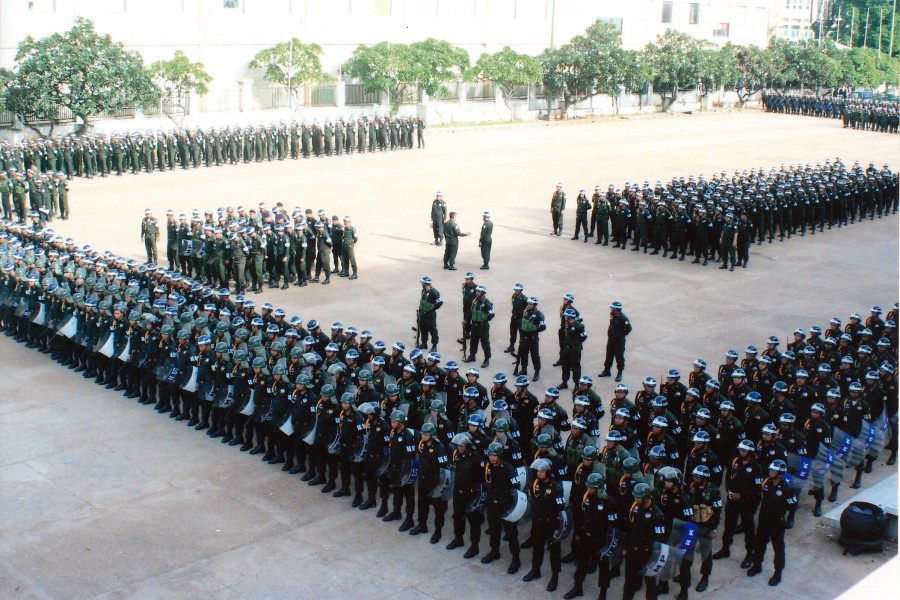Deputy National Police chief Kirth Chantharith on Tuesday closed a 45-day training course on riot control by returning to a favorite topic of the government: dire warnings that Cambodia will be swept up by a color revolution unless the country’s security forces remain vigilant.
Prime Minister Hun Sen himself often conjures up the bogeyman of color revolutions, either willfully or mistakenly conflating actual color revolutions—peaceful popular movements for democratic change—with the civil wars of the Arab world.

General Chantharith continued the mislabeling on Tuesday in his closing speech to the officers who had just finished their riot control training in Kompong Cham province.
“The security situation in the world is still complicated, involving terrorism, rebellion and crime around the world,” he said. “We see countries in the Middle East with color revolutions, such as Iraq, Syria, Libya and Ethiopia, countries that [Mr. Hun Sen] always reminds us to watch and know what’s happening there. Now those countries have been destroyed.”
None of the four countries the general named have had color revolutions. When color revolutions have taken place, predominantly in countries in Eastern Europe, they have been peaceful—if disobedient—uprisings.
Gen. Chantharith pressed on, blaming color revolutions on “incitement,” a charge the government often throws at the opposition or other activists.
“I believe that most of the people [who protest] believe their enticements and incitement,” he said without actually naming the CNRP. “But our country is a democracy, so it has many parties, including opposition parties and pro-[government] parties.”
“We need to have the will in our hearts, and our police need to understand that we have a duty to protect the nation, the government and the people,” he concluded.
The government claims to have its own nascent color revolution in Cambodia in the “Black Monday” protesters—a band of a few dozen women who have taken to wearing black every Monday to demonstrate peacefully against forced evictions, the jailing of fellow activists and other causes. Police have broken up a number of their events.
CNRP spokesman Yim Sovann said that what Cambodians had to fear most was not a color revolution, but their corrupt government.
Cambodia is regularly ranked among the most corrupt countries in the world, thanks in large part to a judicial system in thrall to the ruling CPP, which has remained in power for over 30 years partly due to elections deemed less than free and fair by many observers.
“We do not want to have a color revolution, and we also don’t want to have corruption and human rights abuses,” Mr. Sovann said. “What the people fear most is injustice.”



